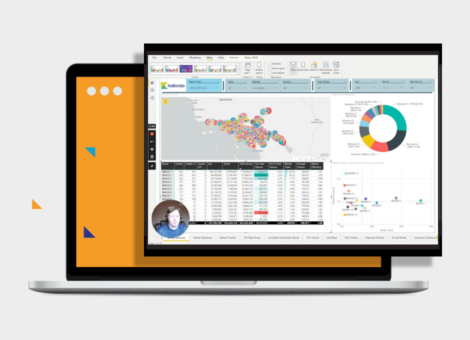Reduce labor costs without cutting staff
Labor costs are the largest expense for any fuel and convenience retailer.
So it goes without saying, the quickest and easiest way to save money and increase profitability is to reduce your labor cost. But of course — you can’t just start blindly letting go of your employees. Your team is your biggest asset, and with good management, clear responsibilities, and the right attitude, the right people can improve your profitability.
What you need to do is use data to make informed decisions about managing your labor needs and settling at a level that allows you to provide excellent customer service and execute your operations consistently — without being wasteful. Have a goal for what your labor cost should be and stick to it. A good rule of thumb is that labor cost should be between 8-10% of your total sales for c-stores with minimum food service and between 12-14% for stores with heavy foodservice offerings. Too much labor is wasteful. Too little labor can hurt your store image and reduce your sales and profitability.
Watch Elena as she uses her past experiences to bring you actionable advice on reducing labor costs:
Find that sweet spot
The best way to find that perfect balance is to consider your transaction counts. Analyze transactions per hour, day of the week, and season — then ensure you have enough employees scheduled to keep the customer’s line to three or fewer at all times. You don’t need to stick to the same schedule every day. You’ll have days that are far busier than others, so schedule more staff on those days and reduce the number of staff on quiet days.
If you have more than 40 transactions per hour, you will need to schedule a second associate on duty to open the second register. This is just for register staff. Think about labor hours needed for cleaning, stocking, and food service.
Once you know how many associates your store needs every day of the week, every hour of the day, build the ideal schedule that will support your store operations.
A common mistake by store managers is to build a schedule based on traditional shifts 7am – 3pm, 3pm – 11pm, 11pm – 7am, and schedule only in these shift patterns. But in reality, shift patterns should be driven by your operational store requirements. You could end up with multiple four to five-hour short shifts that overlap. You might need four associates on duty during the morning rush hour but only one or two in the middle of the day. Use transaction data to build the best schedule for the store based on the transaction count and additional tasks like stocking, cleaning, maintaining food service, and then hire the associates who can work these shifts.
Balancing full time and part-time employees
Another way to control labor costs is to maintain a healthy ratio of full-time and part-time employees. A good ratio to aim for about 40% full-time and 60% part-time associates. Full-time employees are the backbone of your operations. They work the most hours and tend to know the most about what is going with your business, which is essential.
Full-time staff tend to be more invested and stay longer with your business. But full-time employees are more expensive because of the additional benefits like vacation and health insurance. Also, they expect 40 hours a week and are rarely flexible about working shorter irregular shifts. This is where the part-time associates save the day. Part-time associates are less expensive and more flexible, especially if you set your expectations before hiring them.
And finally, Elena’s best practice tip:
Schedule in advance
This is a tried and tested tactic that Elena has implemented across hundreds of convenience stores. It’s not normal practice, as this industry has high staff turnover, regular call-outs, and no-shows — but it has worked time and time again.
If you post your schedule four or more weeks in advance, your associates can plan their personal lives better. We all have commitments outside of work that are more important than our work lives. Scheduling in advance shows a higher level of respect for your teams’ personal lives. Allowing them to plan in their personal responsibilities around their work schedules effectively will result in fewer last-minute call-outs. If shifts need to be swapped, it can be done well in advance ensuring your employees aren’t unexpectedly called in and you’re not unexpectedly paying overtime.
It will save you money on unplanned overtime, it will reduce staff turnover, and ultimately it will foster mutual respect between you and your team.
Watch the full “Maintaining and increasing profitability” webinar on demand.
Elena Lau and Alexia Field bring you actionable insight and advice on
- How to implement a successful employee hiring process
- How to compete with larger fuel retailers
- Decreasing costs with better inventory management
Read more articles about:
Location intelligenceSubscribe and get the latest updates
You may unsubscribe from our mailing list at any time. To understand how and why we process your data, please see our Privacy & Cookies Policy
Related posts
Fuel pricing
Maintaining and increasing profitability — on demand
In this live Q&A Rianne McBride invites two of Kalibrate's experts, Elena Lau and Alexia Field, to share...

Location intelligence
How to compete with larger fuel retailers
Big retailers have big budgets to spend on advertising, and can harness economies of scale allowing them to buy in...

